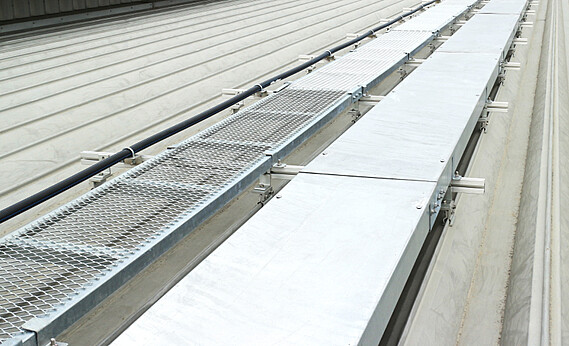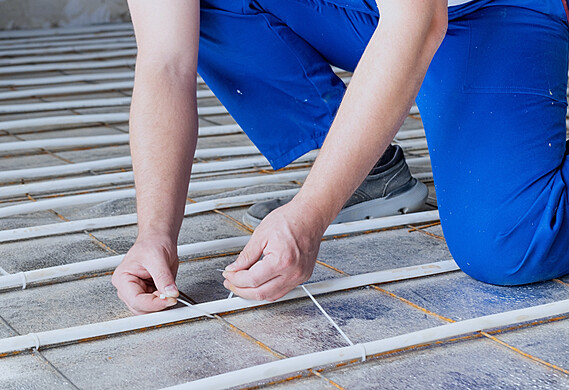Beneath the Surface: How Underfloor Trunking Is Redefining Safety in Modern Infrastructure

In the high-stakes world of modern construction and interior design, aesthetics and functionality often fight for center stage. But while designers obsess over surface finishes and architects push for bolder facades, a quiet revolution is happening beneath our feet—Underfloor Trunking systems are fast becoming the unacknowledged heroes of safety and smart space management.
Invisible to the eye yet critical to performance, underfloor trunking—those concealed channels guiding cables beneath raised floors—is proving indispensable in office buildings, hospitals, airports, and educational institutions worldwide. From reducing fire hazards to streamlining facility management, underfloor trunking is not just a feature—it's a foundation for safety.
Table of Contents
The Silent Protector: What is Underfloor Trunking?
Underfloor trunking refers to a cable management system installed beneath flooring, allowing electrical, data, and communication cables to run efficiently and securely throughout a space. Unlike overhead cabling or wall-mounted conduits, underfloor trunking offers a concealed, organized, and accessible path for routing complex wiring.
But its significance runs deeper than mere cable organization. As modern infrastructures evolve to accommodate smart systems, IoT devices, and sustainability goals, underfloor trunking is stepping up as a critical asset in enhancing:
Fire Safety: From Passive Prevention to Active Protection
A tangle of exposed or loosely arranged cables isn't just an eyesore—it’s a ticking time bomb. In the event of a short circuit or electrical overload, exposed cabling becomes an ignition point, especially in high-density data environments.
According to Research and Markets, the global cable tray market is expected to reach USD 6.2 billion by 2030, up from USD 3.5 billion in 2022. The Middle East—especially the United Arab Emirates—is making a substantial contribution due to an increase in major infrastructure and smart building projects.
Underfloor trunking systems constructed with fire-rated materials like galvanized steel or aluminum significantly reduce the risk of flame spread. Moreover, fire barriers and compartmentalized trunking configurations allow for intelligent circuit isolation, making them indispensable in emergency response strategies.
Trip-Free Zones: A Hidden Win for Health & Safety
Workplace injuries due to trips and falls are more common than one might think. The Health and Safety Executive (HSE UK) reports that 29% of non-fatal workplace injuries stem from slips and trips—many of which involve exposed wiring or poorly managed cabling in open workspaces.
Underfloor trunking eliminates surface clutter by routing all power and data channels beneath raised access floors, significantly reducing tripping hazards. Underfloor trunking provides the safety and flexibility to adapt without sacrificing mobility or aesthetics in dynamic spaces like trading floors, collaborative office hubs, and educational labs—where layouts are constantly shifting.

Future-Proofing Digital Infrastructure
In the era of hybrid work and agile environments, flexibility is everything. Businesses frequently need to reconfigure desks, meeting pods, or digital hubs, and traditional fixed wall sockets and ceiling-mounted cabling just can’t keep up.
Underfloor trunking systems allow modular access to power and data points, letting IT teams rewire or expand networks with minimal disruption. Moreover, trunking systems are now being integrated with smart cable management solutions—like thermal sensors and load monitoring—to optimize network performance and reduce overheating risks.
According to a 2023 report by MarketsandMarkets, the global structured cabling market is expected to hit USD 15.9 billion by 2028, with underfloor trunking forming a significant component in commercial and industrial installations.
Compliance and Regulation: More Than a Checkbox
Building codes across regions are increasingly mandating safer, concealed-wiring infrastructure. In the UAE, the Abu Dhabi Quality and Conformity Council (QCC) and Dubai Civil Defence have strict regulations on cable management systems, particularly in fire-prone or high-occupancy structures.
Underfloor trunking offers a reliable pathway to compliance, especially when systems meet or exceed international standards like:
For cable trunking systems
For cable management trays and ladders
For electrical safety in the U.S.
Using underfloor trunking is no longer about innovation—it's about obligation. It's a requirement in data centers, healthcare facilities, and critical infrastructure projects across the UAE and beyond.
Design Meets Safety: Aesthetics Without Compromise
Today's buildings are designed not only for function but also for form. Open-plan offices, minimalist interiors, and exposed architectural elements are trending worldwide. The challenge? Keeping wiring systems out of sight without sacrificing safety or accessibility.
Underfloor trunking allows for a clean, cable-free environment. Electrical and data points can be positioned exactly where needed—without unsightly wall chases or conduit boxes. Underfloor trunking provides the ultimate compromise for designers and engineers alike: form meets function without friction.

Underfloor Trunking in UAE: A Local Imperative
In a region like the UAE, where skyscrapers are rising faster than ever and innovation is embedded in city planning, underfloor trunking has become a non-negotiable tool in both the public and private sectors.
High-profile developments like Masdar City, Expo City Dubai, and Dubai International Airport’s Terminal Expansion are all examples of how underfloor cable management systems have been leveraged for performance and safety. With high ambient temperatures and demanding electrical loads, these systems must meet exceptional standards—and local suppliers are stepping up with custom solutions, heat-resistant materials, and rapid-install systems tailored for regional needs.
Final Thoughts: It's What's Underneath That Counts
In today’s hyper-connected, risk-aware, and design-conscious world, safety doesn’t begin with a fire alarm—it starts with how you manage what’s beneath your feet.
Underfloor trunking may be hidden from view, but its impact is anything but invisible. It protects, enables, and empowers modern infrastructure. As smart buildings become the norm and safety regulations evolve, underfloor trunking will continue to serve as the silent sentinel—guarding against danger, ensuring flexibility, and future-proofing the spaces of tomorrow. So the next time you walk into a modern workspace, pause for a second—not to look up, but to appreciate what’s beneath.
